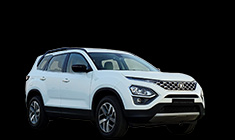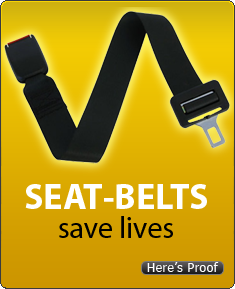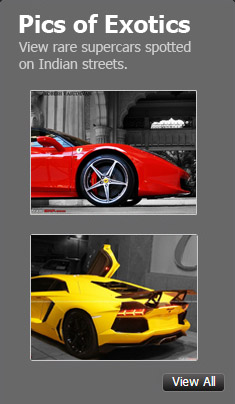News
A 6,400km road trip in a Tata Curvv EV: Route and charging stops
Between our two electric cars (Tata Curvv and Mercedes-Benz EQB), an electric bike, a 14-kilowatt solar setup at home, and a house full of over 300 plants, going green isn’t just a choice; it’s a lifestyle
BHPian EVCruiser recently shared this with other enthusiasts:
Charging Through: Our 6,400 km Electric Road Trip Across India
An electric road trip across India, a commitment to sustainable energy, a commitment to a greener future. In the 14 days of our travel, my wife and I drove from Bangalore to different iconic destinations like Rann of Kutch, Jaisalmer et all covering the diversity of our country and the many challenges of driving Electric car. From charging infrastructure to scenic routes, each leg of the journey reinforced our commitment on reducing our carbon footprint.
Sustainability isn’t just something we talk about—it’s how we live. Between our two electric cars (Tata Curvv and Mercedes EQB), an electric bike, a 14-kilowatt solar setup at home, and a house full of over 300 plants, going green isn’t just a choice; it’s a lifestyle. This trip was our way of proving that electric travel isn’t just possible—it’s practical, fun, and the future. We hope our journey inspires more people to embrace sustainable travel.
While there were some early challenges driving an electric car on an epic cross-country journey — notably, finding enough charging stations — the obstacles added to the excitement and spontaneity of the trip. We found that the charging stations we encountered, many with restaurants and rest areas, were encouraging us to take breaks, reducing driving fatigue and making the trip more enjoyable.
The Joy of the Unexpected
The highlight of the trip is it is entirely unplanned. We only had Ran of Kutch and Jaisalmer in our minds and route and stays along the way are out of spontaneity. We have chosen Tata Curvv for this trip because of easiness in terms of servicing in any emergency case. We tried to charge mostly in Tata Power wherever it is available but mostly others as well since they are faster compared to Tata Power Chargers. Charging in 120kwh fast charger is so refreshing that it charges 20% to 80% in less than 20min.
Trip in Numbers –
Total Trip Days: 16
Core Travel Days: 11
Distance Covered: 6,387 km (Bangalore to Bangalore), 5,522 km (Nellore to Nellore)
Average Km per Day: 400 (Bangalore to Bangalore), 502 (Nellore to Nellore)
States Covered: 7
Total kWh Consumed: 954 (Bangalore to Bangalore), 816 (Nellore to Nellore)
Km per kWh: 6.7 (Bangalore to Bangalore), 6.77 (Nellore to Nellore)
Charging Stops: 31 (Bangalore to Bangalore), 27 (Nellore to Nellore)
Day 1: Bangalore to Tirupati (250 km)
Our journey began in Bangalore, leaving in the late afternoon at 4:30 PM. We reached Tirupati by 8:30 PM. After charging our electric vehicle at the Taj Hotel (Tata Power Station, 37 kW), we stayed overnight at my sister’s place, marking the first leg of our exciting road trip.
Day 2: Tirupati to Nellore (135 km)
We spent the day in Nellore, where we dropped our kids and Fizzy (Doggy) off at their grandparents' house. We didn’t rush and enjoyed some quality family time before continuing our journey.
Day 3: Nellore to Hyderabad (485 km)
After leaving Nellore, we stopped in Ongole to see some friends while charging as well. We stopped at Rompicherla for a quick charge, then continued to Hyderabad, where we arrived by 6:00 PM. We stayed at friends place and topped up the vehicle at TML Select in Alkapuri (Tata Power).
Day 4: Hyderabad to Ellora Caves and then to Dhule (764 km)
We set out early and debated whether to take the route through Maharashtra to Rann of Kutch or the one heading to Jaisalmer. We opted for the former and took a detour to Ellora Caves, stopping to charge at Basavakalyan and Beed along the way. Reaching Ellora, driving 600 km, by late afternoon, we explored the caves and the Grishneswar Temple before heading to Dhule for the night. Charged in Ellora Resort in Ellora while having our dinner.
Day 5: Dhule to Statue of Unity and to Mehsana (568 km)
After a relaxing overnight stay in a nice hotel and nice breakfast and quick charge in Dhule, we made our way to the Statue of Unity in Gujarat. Reaching by 3:00 PM, we spent the afternoon touring the statue and other attractions nearby, while charging our vehicle in Ramada Encore. We then continued to Mehsana for an overnight stay after charging at Kalol while dining.
Day 6: Mehsana to Rann of Kutch (355 km)
The drive to Rann of Kutch was one of the most memorable of our trip. We charged our vehicle in Radhampur and continued our journey of 245 kms to Rann Utsav area. As we drove through the vast, endless white desert, we felt like we were in another world. We reached Rann of Kutch by 4:30 PM, charging the car at Mobiline before heading out to explore the white desert and catching the night views. If the only charging station in Rann Utsav is not working then the backup plan was to drive 82 km to Bhuj for charging which would be a detour. We stayed at Tent City for the night, enjoying cultural programs and traditional food. The following morning, we caught the stunning sunrise over the desert.
Day 7: Rann of Kutch to Barmer (475 km)
We started from Rann of Kutch and crossed through the picturesque Radhampur route. Along the way, we visited the Dholavira Harappan civilization site and stopped to charge at Hotel Shivaay in Tharad. After another quick charge in Sanchur along with Dinner, we reached Bamar by evening, ready to rest.
Day 8: Bamer to Jaisalmer (166 km)
We left Bamar early and reached Jaisalmer by 11:30 AM. We charged the car at Taj Gowrabandha Palace Hotel before heading to Jaisalmer Fort and other nearby attractions. The city, with its sand-coloured architecture, was a sight to behold. After some shopping, we headed to the desert camp area in Sam, where we stayed overnight in neat and clean tents, enjoying cultural programs and delicious food.
Day 9: Jaisalmer Desert Safari and Longewala and to Pachpadra (558 km)
The morning began with a thrilling desert safari and a camel ride in the Sam Desert. Afterward, we decided to visit Longewala, a site with significant historical importance due to the 1961 India-Pakistan war. My wife’s father had sentimental ties to the place as he was posted in Jaisalmer. We visited the Longewala Museum and picked up some souvenirs. We then returned to Jaisalmer and charged the car before starting our journey back. We have reached Pachpadra for overnight stay. We took a non-highway route for some reason and ended up in an nervousness filled drive as we have seen none for over 100 kms in that pitch dark but safely cruised along to Pachpadra and stayed overnight.
Day 10: Pachpadra to Ujjain (658 km)
We departed Pachpadra and made our way toward Ujjain. We reached Udaipur for a brief stop where we charged and dined. Due to time constraints, we didn’t visit the Udaipur Fort but enjoyed lunch and a drive around the city. By evening, we headed to Ujjain for a brief rest and planned to visit the Mahakaleshwar Temple the next morning. We charged in Malgalwaad while snacking and in Dhodar while dining.
Day 11: Ujjain to Khamgaon (390 km)
Early in the morning, we visited the Mahakaleshwar Temple in Ujjain before heading to Indore for a charge and breakfast. Afterward, we drove to Omkareshwar Temple, but due to a heavy rush we were stopped 4 kms before, we had to take an auto rickshaw and after reaching we were told the darshan would take hours. Since I visited the temple earlier, we decided to head to Hyderabad for the New Year’s Eve celebration instead. The road from Omkareshwar to Maharasthra border was was very rough. We reached Khamgaon by 7:30 PM for charging and dining. We contemplated for a moment to stay overnight or continue to Hyderabad and decided the later.
Day 12: Khamgaon to Hyderabad (570 km)
We didn’t stop overnight and instead continued our journey to Hyderabad, charging the vehicle at Nanded around 2:00 AM. By 8:00 AM, we reached Hyderabad, where we spent the day resting and celebrating New Year’s Eve with friends.
Day 13: Hyderabad to Nellore (480 km)
After having a nice breakfast while charging and also visiting couple of friends in Hyderabad, we started our journey to Nellore at 1.30pm. We reached Nellore by 8.30pm while got briefly charged in Ongole along the way. Reunited with family there.
Day 14 and 15 : Quality time with family and friends
Nothing exciting except taking our Fizzy (Dog) to beach for the first time along with the kids.
Day 16: Nellore to Tirupati and to Bangalore (390 Km)
Started the final leg of our Journey from Nellore to Bangalore, stopping at Tirupati for Charging and Lunch with sister’s family.
Looking Back
This 6,400-kilometer road trip across India in an electric vehicle was more than just a journey—it was an adventure that combined exploration, sustainability, and a shared passion for driving. Every stop along the way, from the serene white deserts of Rann of Kutch to the historic sands of Jaisalmer and the spiritual Jyotirlingas, added a unique layer to our experience.
The highlight of this road trip was the stunning drives through the vast white deserts and golden sand dunes. These scenic routes reminded us of the beauty of India’s diverse landscapes and why the journey matters just as much as the destination.
This road trip reaffirmed our confidence in the potential of electric vehicles to support long-distance travel while reducing our carbon footprint. And hence we have immediately done an another 1,600 km trip to Bhimavaram for Sankranthi/Pongal celebrations.
With this trip, we’ve proven to ourselves—and hopefully to others—that long journeys in electric vehicles are practical, enjoyable, and aligned with the vision of a greener future. And as we set our sights on our next adventure, potentially the Maha Kumbh Mela, we hope to inspire more people to embrace sustainable energy solutions and explore the world with an eco-friendly mindset.
After all, it’s not just about the destinations we reach; it’s about the memories we create and the impact we leave behind.















Check out BHPian comments for more insights and information.









.jpg)








